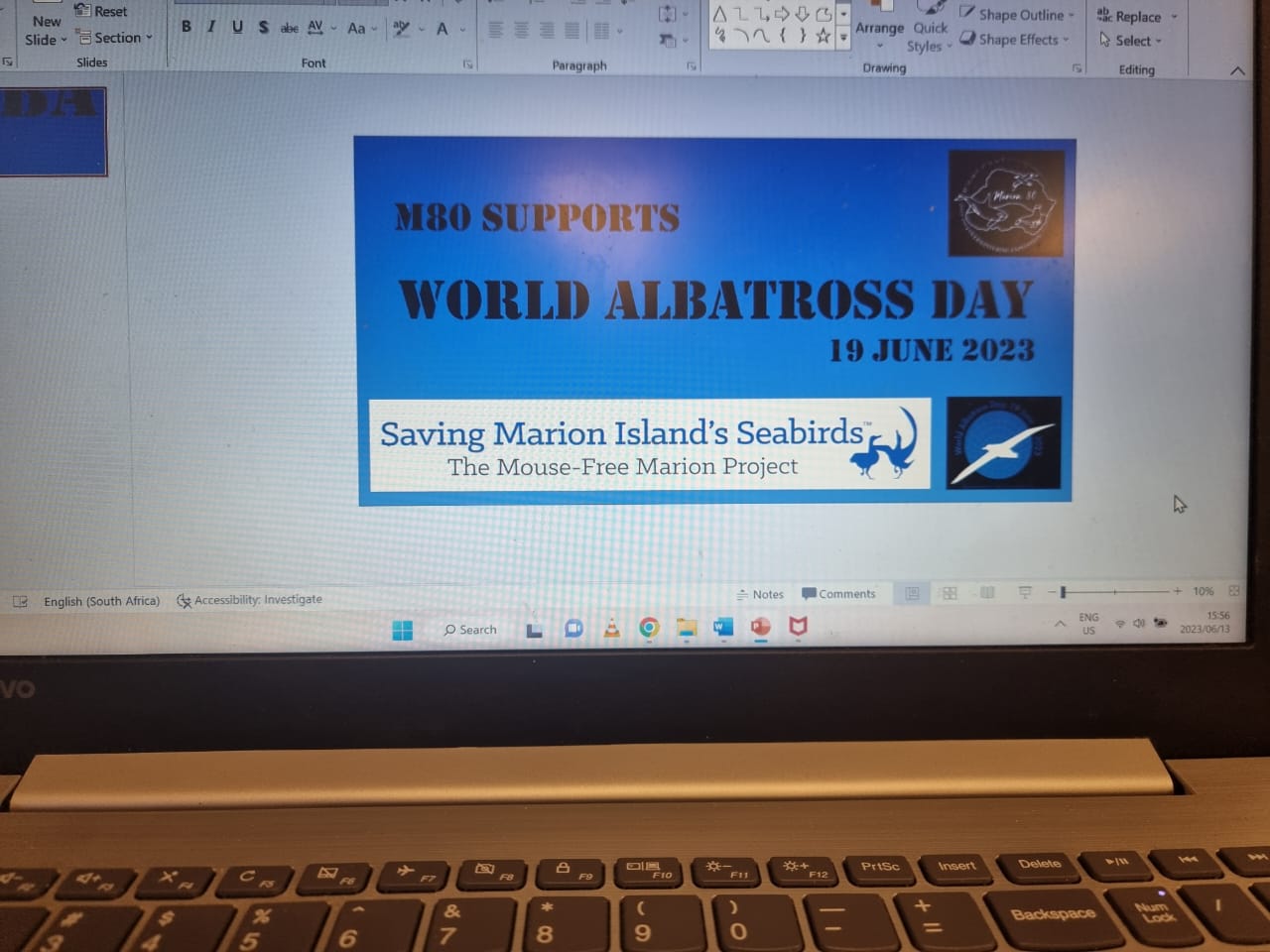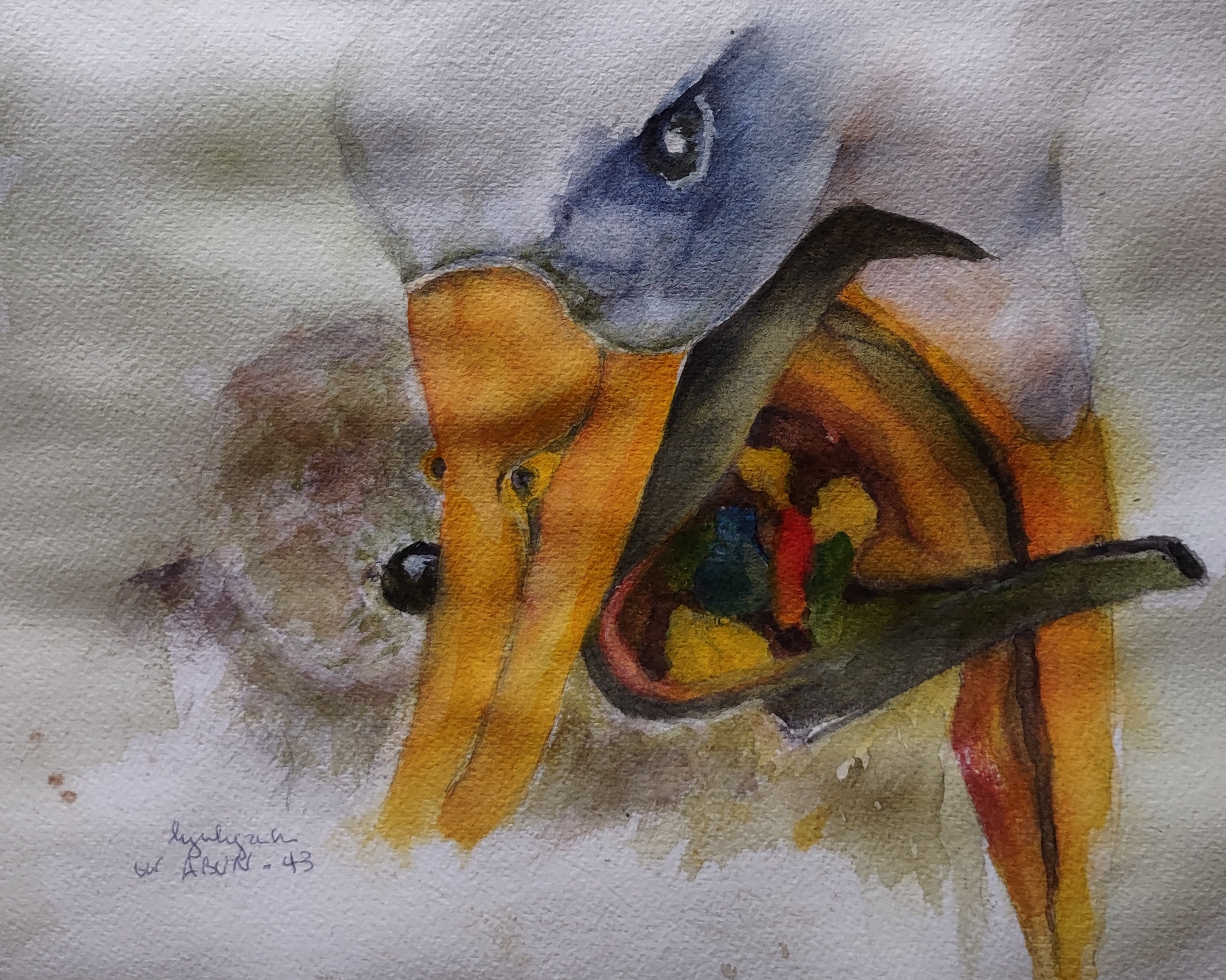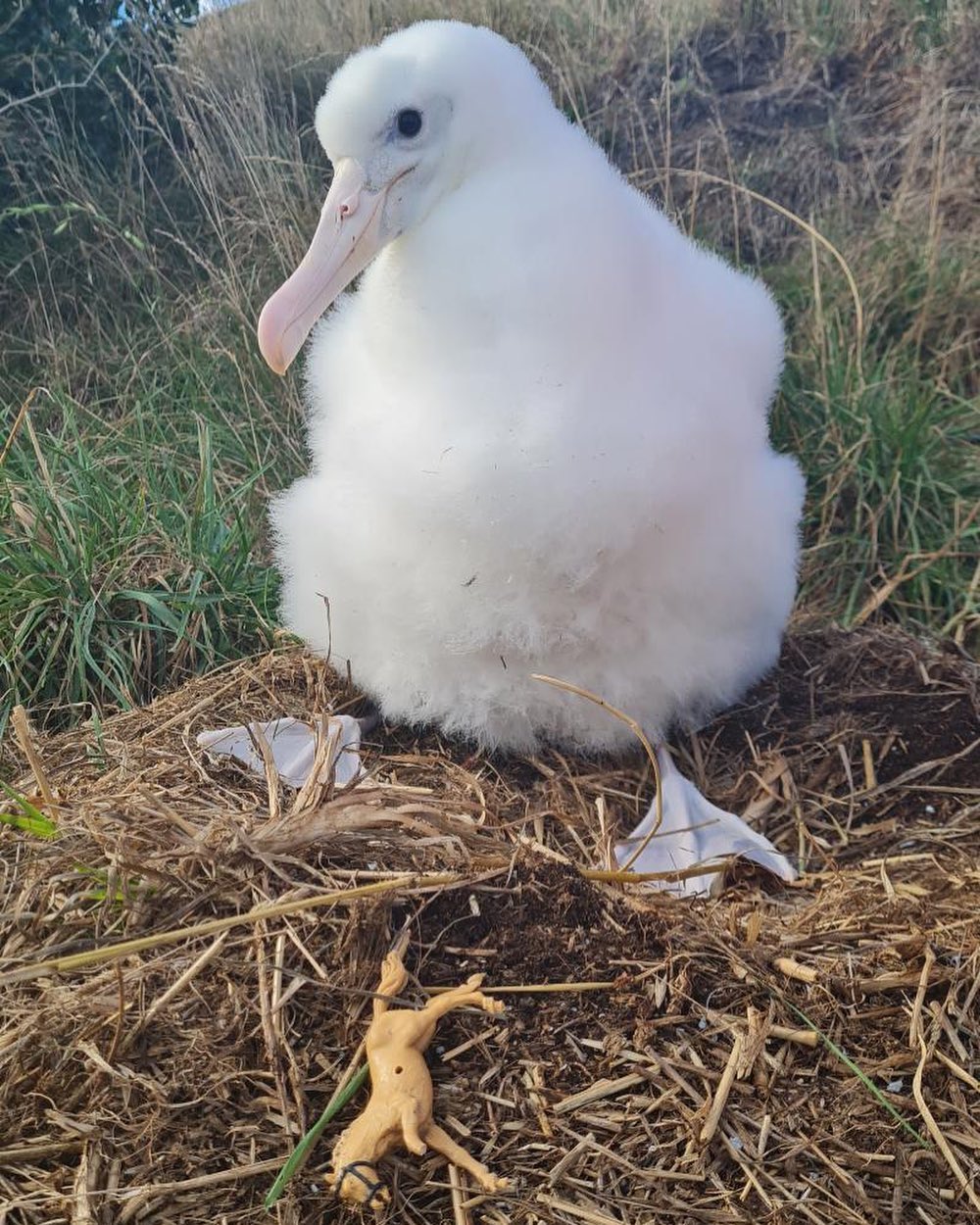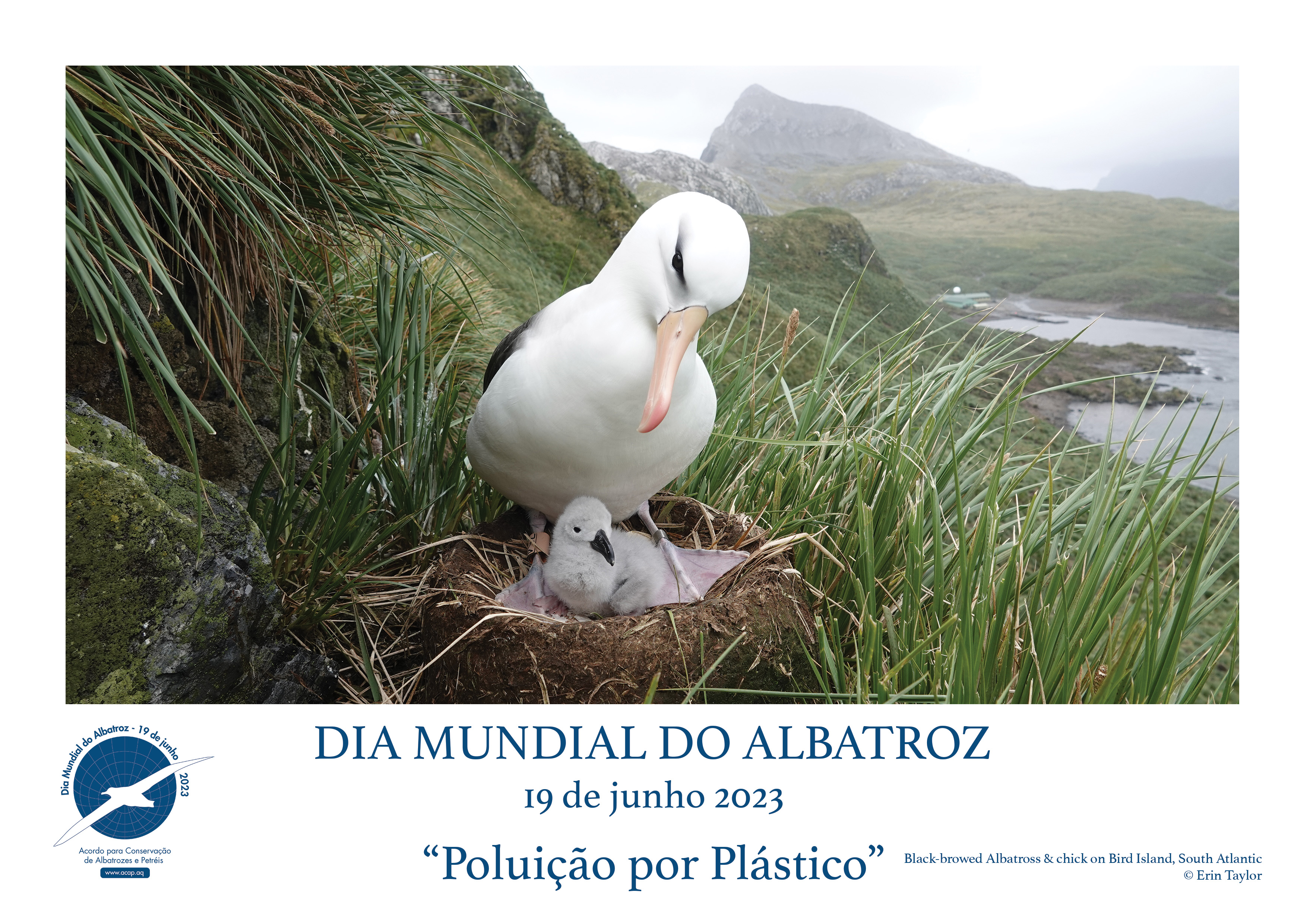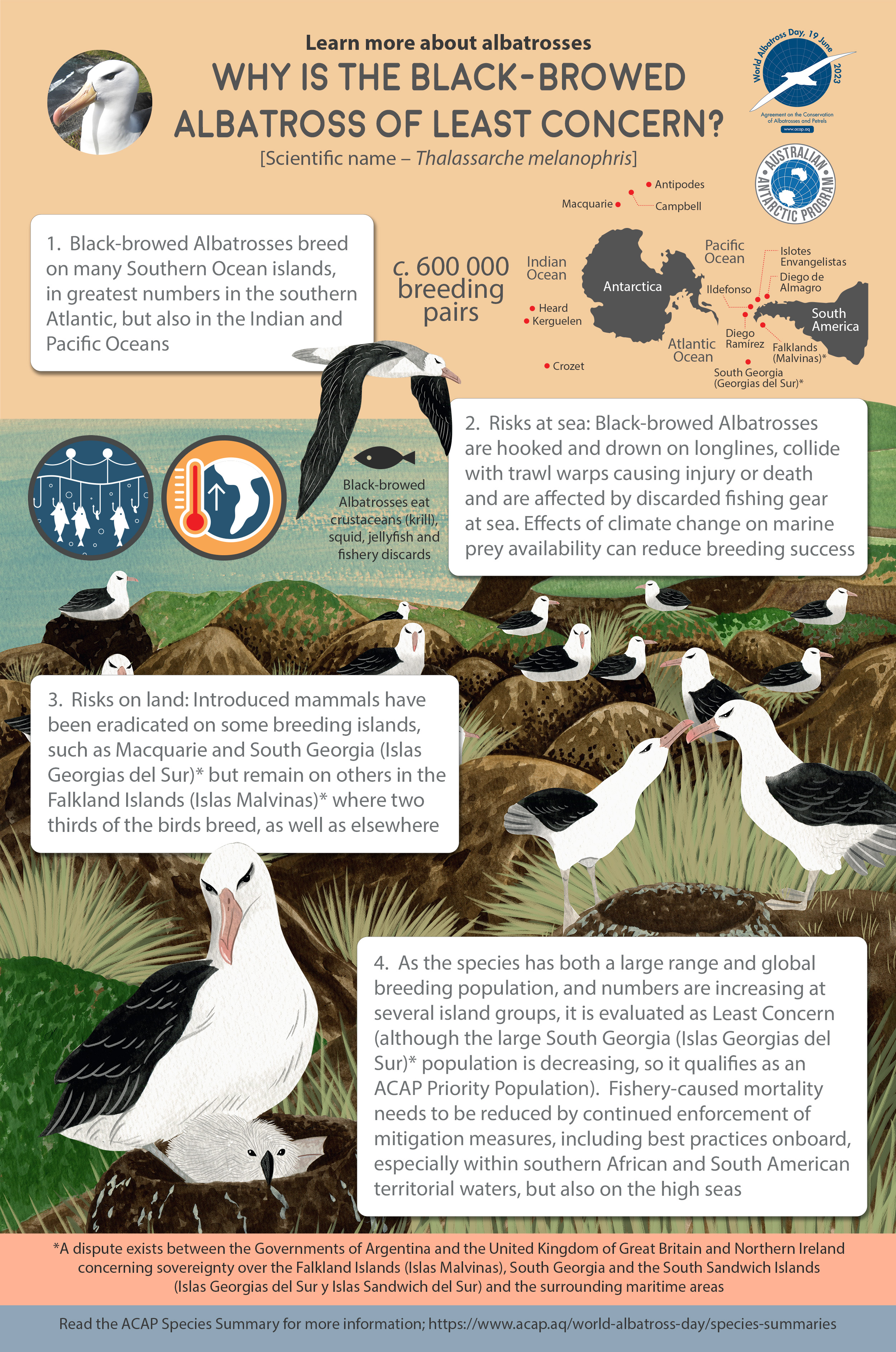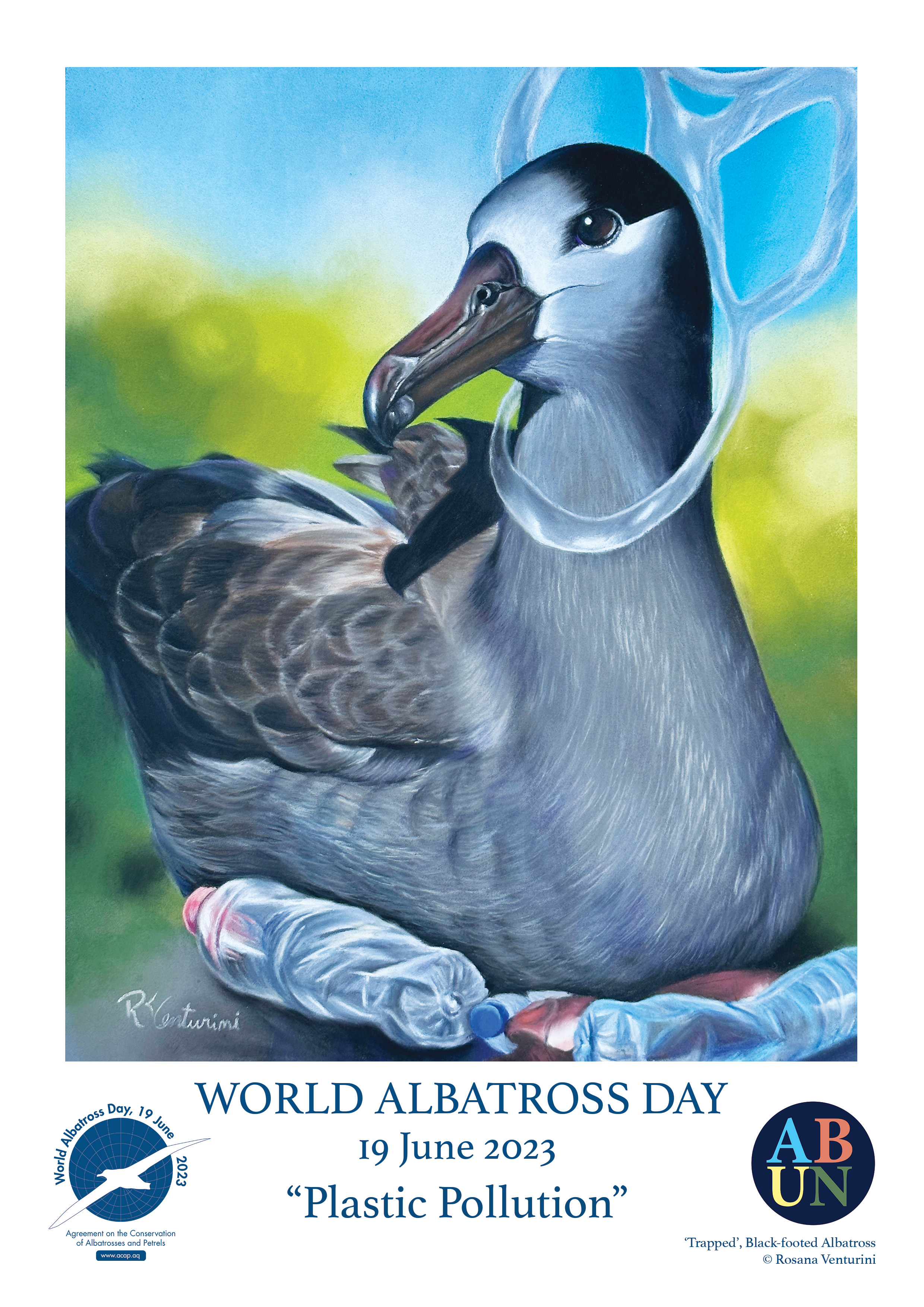
“Trapped”. Black-footed Albatross by Rosana Venturini of Artists and Biologists Unite for Nature for World Albatross Day 2023, poster design by Bree Forrer
NOTE: This month’s Monthly Missive also serves as Day Six of ‘WADWEEK2023’.
Initiating a World Albatross Day
Back in the latter half of 2018 I was contacted by seabird researcher Michelle Risi with the suggestion that there should be a World Albatross Day to celebrate albatrosses and their kin once a year and to enhance awareness of their conservation needs (click here). On and off for some years as ACAP’s Information Officer I had toyed with the idea of a special day for albatrosses and petrels but had not taken the idea any further. Michelle had used the internet and social media to sound out the views of marine ornithologists and others, obtaining positive replies. Armed with this support, and following further discussions within the ACAP community, Michelle and I co-wrote an Information Paper on behalf of the Secretariat proposing a World Albatross Day for discussion at the Eleventh Meeting of the ACAP Advisory Committee that was to be held in Florianópolis, Brazil in May 2019.
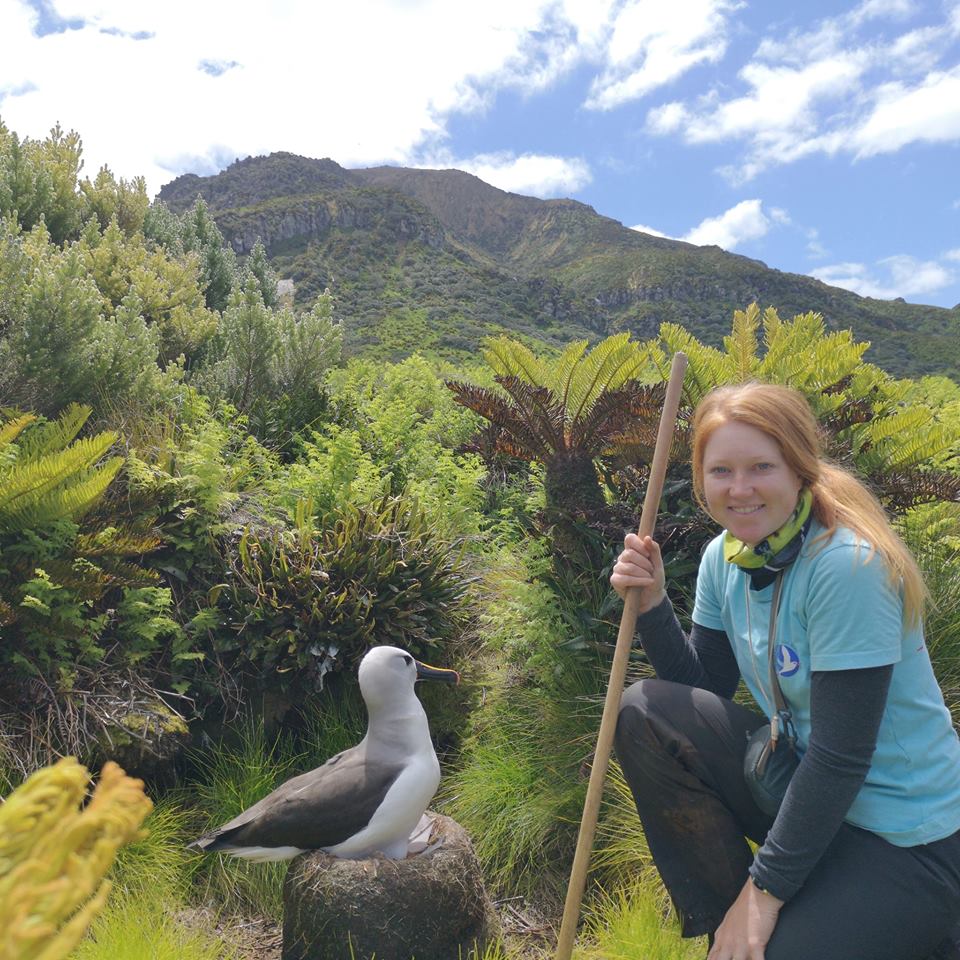
Michelle Risi proposed a World Albatross Day to ACAP in 2018; here she is with an Endangered Atlantic Yellow-nosed Albatross Thalassarche chlororhynchos on its pedestal nest within a study colony on Gough Island in the South Atlantic
In our paper we proposed that the inaugural World Albatross Day should be marked annually on 19 June, the date in 2001 that the Albatross and Petrel Agreement was signed in Canberra, Australia. Preliminary discussions engendered several suggested dates based on albatross annual cycles but given the variations that exist among species across both hemispheres this was not thought ideal. We further suggested it would be best to start relatively modestly, using the period to 19 June 2020 to spread the word via social media and other means. Following discussion by the Advisory Committee, considerable support for the proposal was received from the Parties, observing range states and NGOs present, who noted that marking World Albatross Day would align well with the aim of giving the Agreement greater visibility (click here). It was thus agreed that ACAP would take the lead in inaugurating a World Albatross Day on 19 June the following year, to allow a generous lead time to advertise it. The Advisory Committee then appointed an intersessional group to explore the proposal further comprising Argentina, Australia, Brazil, Chile, Ecuador and the UK, the NGO Projeto Albatroz, and the ACAP Information Officer, to be led by Verónica López from Chile. This group met on the last day of the Advisory Committee meeting for an initial discussion; thereafter communicating electronically.
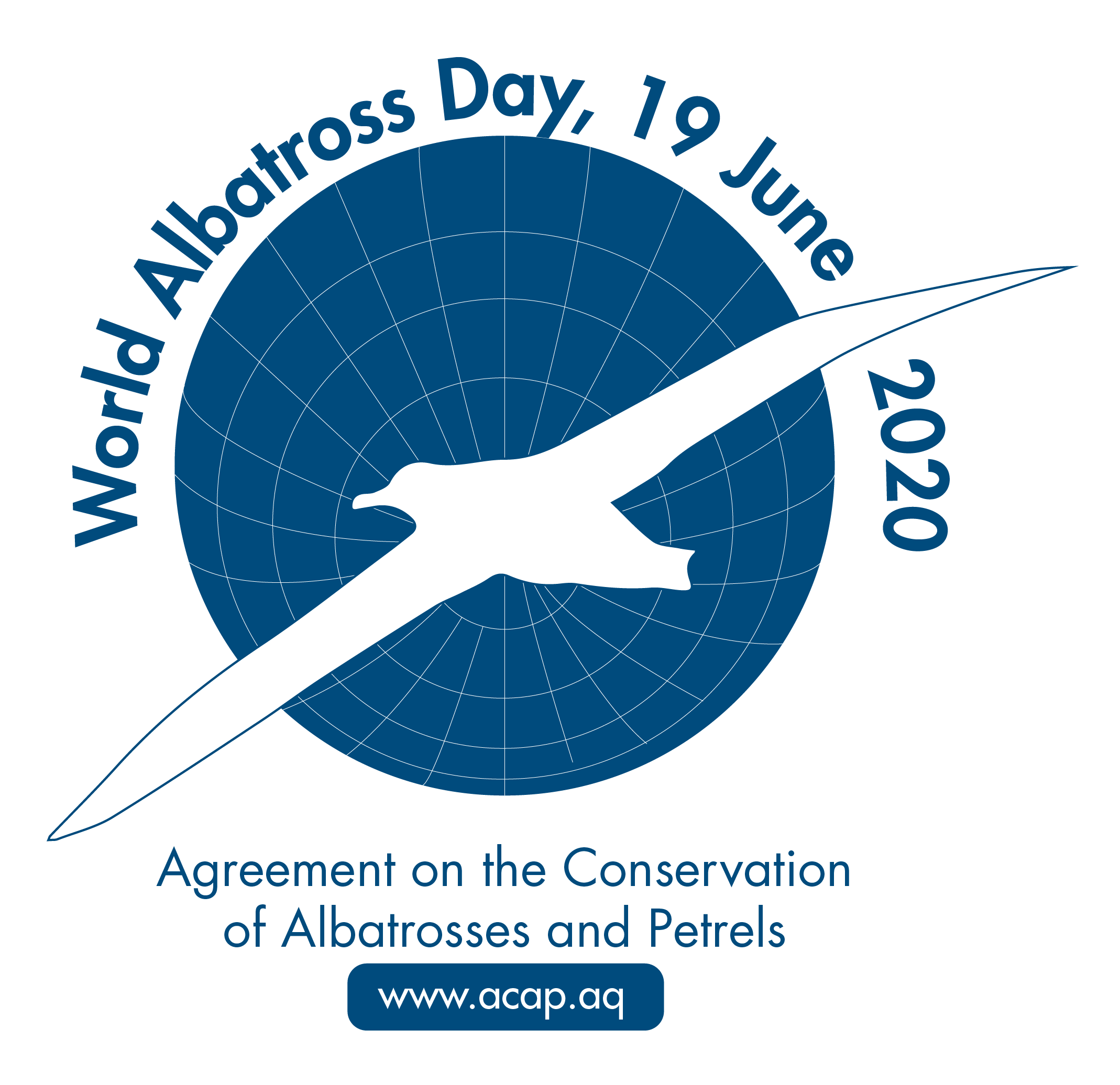
The World Albatross Day logo for 2020 in English, French and Spanish versions was designed by Geoffrey Tyler
Working up to and holding the first World Albatross Day in 2020
An early decision was that World Albatross Days should have an annual theme, and “Eradicating Island Pests” was chosen for 2020. A World Albatross Day logo was then designed in English, French and Spanish pro bono by illustrator Geoffrey Tyler. To launch the inaugural World Albatross Day, it was considered necessary to start early in 2020 to “spread the word” as widely as possible, especially within those countries that are range states for ACAP-listed species. To achieve this, several approaches were taken. One that was particularly successful was utilizing my contacts built up over a life-time career as a marine ornithologist to request a short quote in support of a World Albatross Day, along with a “head and shoulders” mug shot. This appeal was remarkably successful, around a hundred responded positively with only one seabird researcher who replied declining to do so. The quotes and photos were regularly displayed as they came in on the ACAP website’s home page and in news posts and on ACAP’s Facebook page. Quotes were also requested from as many national partners of BirdLife International and other environmental NGOs as could be contacted, again with good success.
With the aid of the intersessional group, notably its Convenor, Verónica López, three public competitions were held, to further spread awareness. These were a photographic competition, a colouring-in competition for children (with age categories) and the Great Albicake Bake Off, with teams of international experts appointed for each to judge the results. Category and overall winners and runners-up received WAD2020 posters designed by Michelle Risi in the mail (as COVID-19 restrictions allowed). All entrants received an electronic certificate. All three competitions received good responses, with around 70 “albicakes” being produced, some of them truly remarkable. A poster depicting the 22 albatross species was also produced pro bono by internationally recognized illustrator Owen Davey, and Marc Parchow of Qual Albatroz produced a special cartoon for the day in four language versions, also without charge.
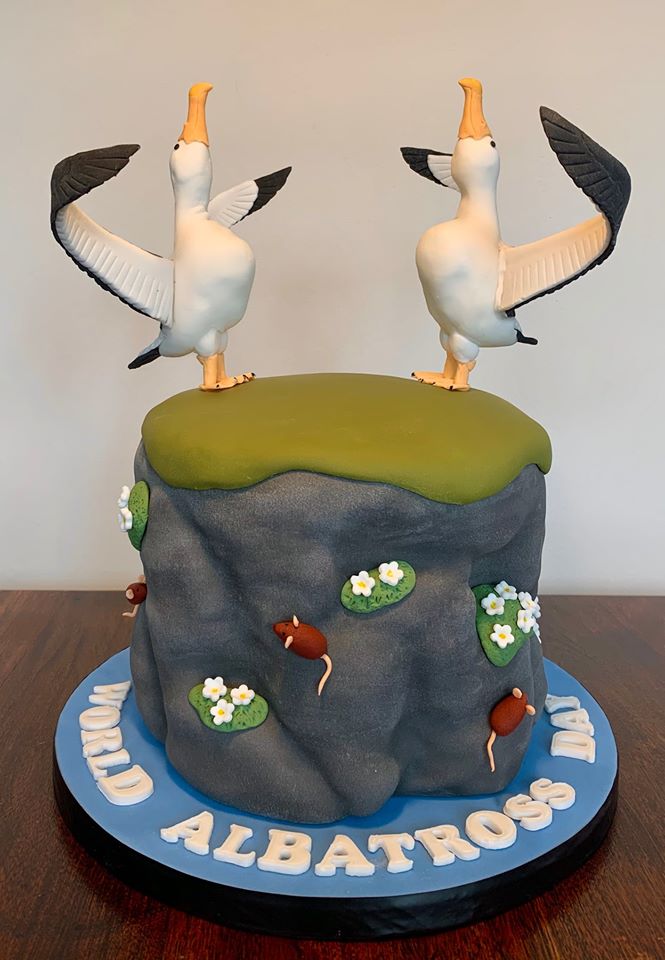
Adam Naylor’s prize-winning “albicake” depicted Tristan Albatrosses on Gough Island being threatened by introduced House Mice – fitting nicely into the WAD2020 theme of “Eradicating Island Pests”
The highlight for me was setting up the first collaboration with Artists and Biologists Unite for Nature (ABUN) through its co-founder Kitty Harvill. This resulted in no less than 324 artworks being produced by 77 artists for ACAP’s use, all at no financial cost to the Agreement! Again, many remarkable paintings were produced, some being turned into posters by Ruth Cooper. The collaboration ended with a collage poster of all the artworks and a nine-and-a-half-minute video being produced by Kitty, the latter with a musical score by USA-based musician John Nicolosi entitled ‘Flight of the Albatross’.
To help inform ABUN artists of the world’s 22 species of albatrosses they were being asked to paint, species texts were written for its Facebook page These have evolved into the ACAP Species Summaries series, with now all 31 ACAP-listed species depicted in downloadable two-page sheets, each illustrated with ABUN art. These are available in English, French and Spanish, with six of them currently being translated into Portuguese.
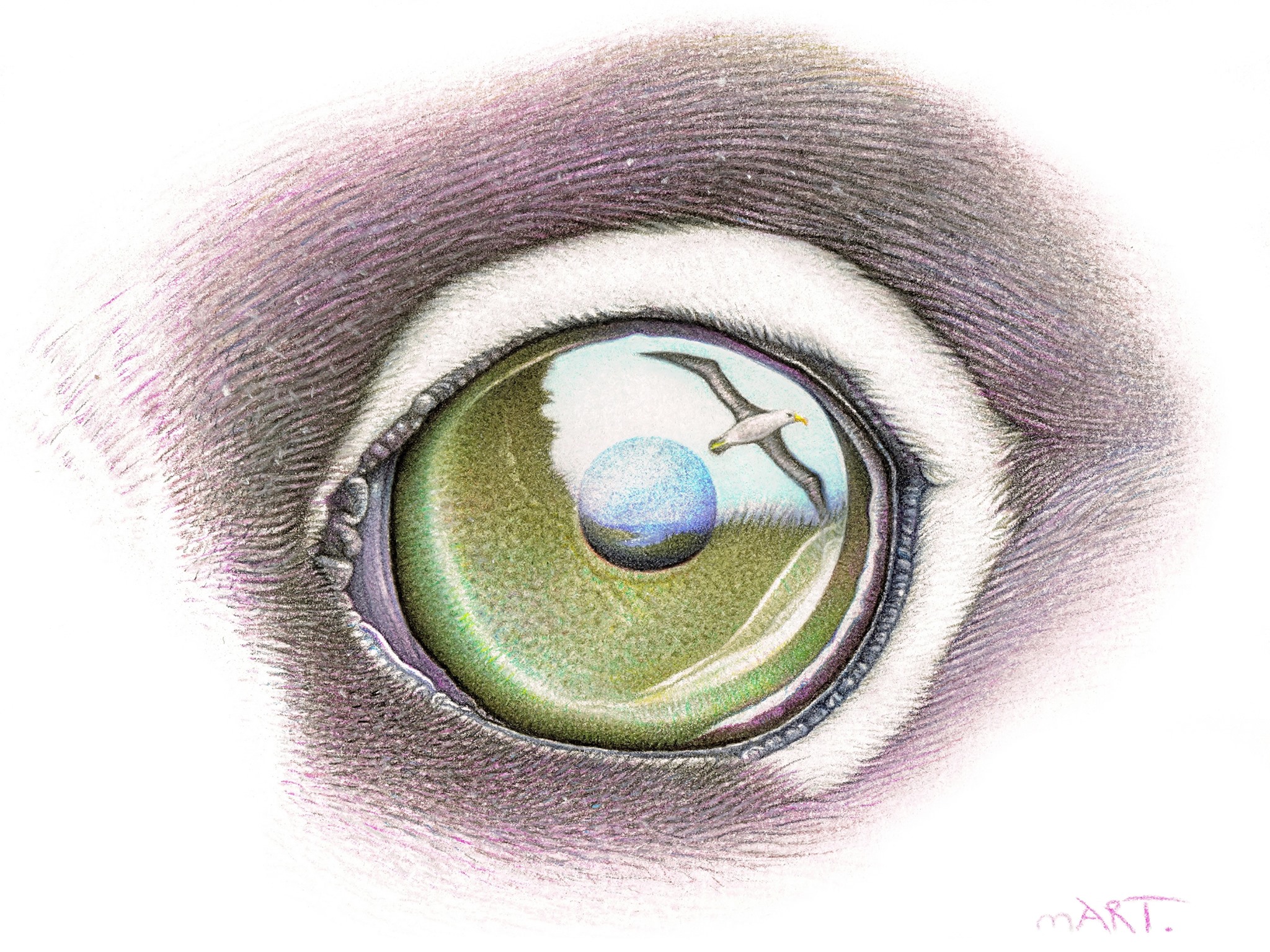
A Black-browed Albatross is reflected in the eye of a Light-mantled Albatross Phoebastria palpebrata. ABUN art for WAD2020 by Martin Aveling
In 2019 we also initiated a banner challenge, requesting field workers at albatross-breeding sites to make and display a banner supporting 2020’s World Albatross Day, preferably with a suitable-distanced albatross in the fore or background. It took a good year to receive photographs of all the banners collected, but coverage was remarkably good, considering the difficulties of getting ashore at some of the breeding localities with 50 banners displayed by 10 different countries, as well as in disputed territories and even on fishing vessels at sea. Public judging then followed with the best three banners being selected from the collection on the ACAP Facebook page.
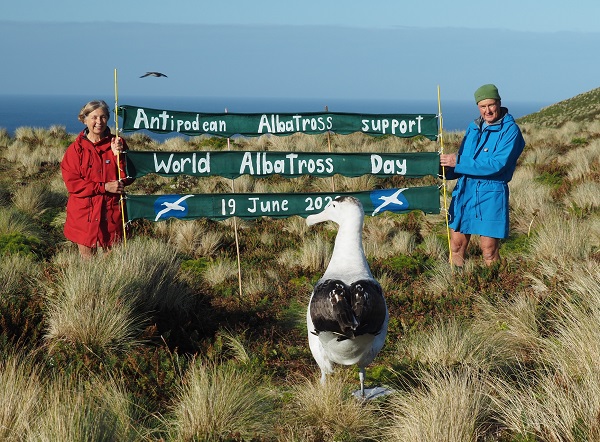
One of my favourites: Kath Walker ONZM and Graeme Elliott with their WAD2020 banner on New Zealand’s Antipodes Island get ‘photobombed’ by a passing Endangered Antipodean Albatross Diomedea antipodensis
Lastly, a media release in three languages was sent out by the ACAP Secretariat a few days before 19 June. For archival purposes, all the many World Albatross Day posts for 2020 to ACAP Latest News from June 2019 to October 2020 have been grouped on the website here.
World Albatross Days in 2021 and 2022
Perhaps not surprisingly, after a year and a half of concerted effort inaugurating World Albatross Day on 19 June 2020, activities held for the next two years were relatively muted, with, sadly, no new competitions or challenges. The WAD logo was updated for both years and the valued collaboration with ABUN continued to support the two themes of “Ensuring Albatross-friendly Fisheries” in 2021 and “Climate Change” in 2022.
An initiative was choosing albatrosses to be featured each year with artworks and posters. In 2021 these were the Tristan Albatross Diomedea dabbenena and the Waved Albatross Phoebastria irrorata, both Critically Endangered. In 2022 the Black-footed Albatross P. nigripes and the Laysan Albatross P. immutabilis were the chosen pair, referencing their risk to sea level rise as a consequence of climate change.
Collaborations with ABUN continued with a pleasing number of artworks being received for each year. Once again selections were made so that posters could be produced to join the series of WAD photo posters in the ACAP languages of English, French and Spanish. These can be found in albums on the ACAP Facebook page. ACAP Species Infographics in the three ACAP languages were produced for all four featured albatrosses, most of them marking World Albatross Day by the addition of the WAD logo, as well as that of the sponsoring body. Once again media releases were prepared and sent out by the Secretariat to contacts, NGOs, ACAP Parties and their representatives, tRFMOs and more.
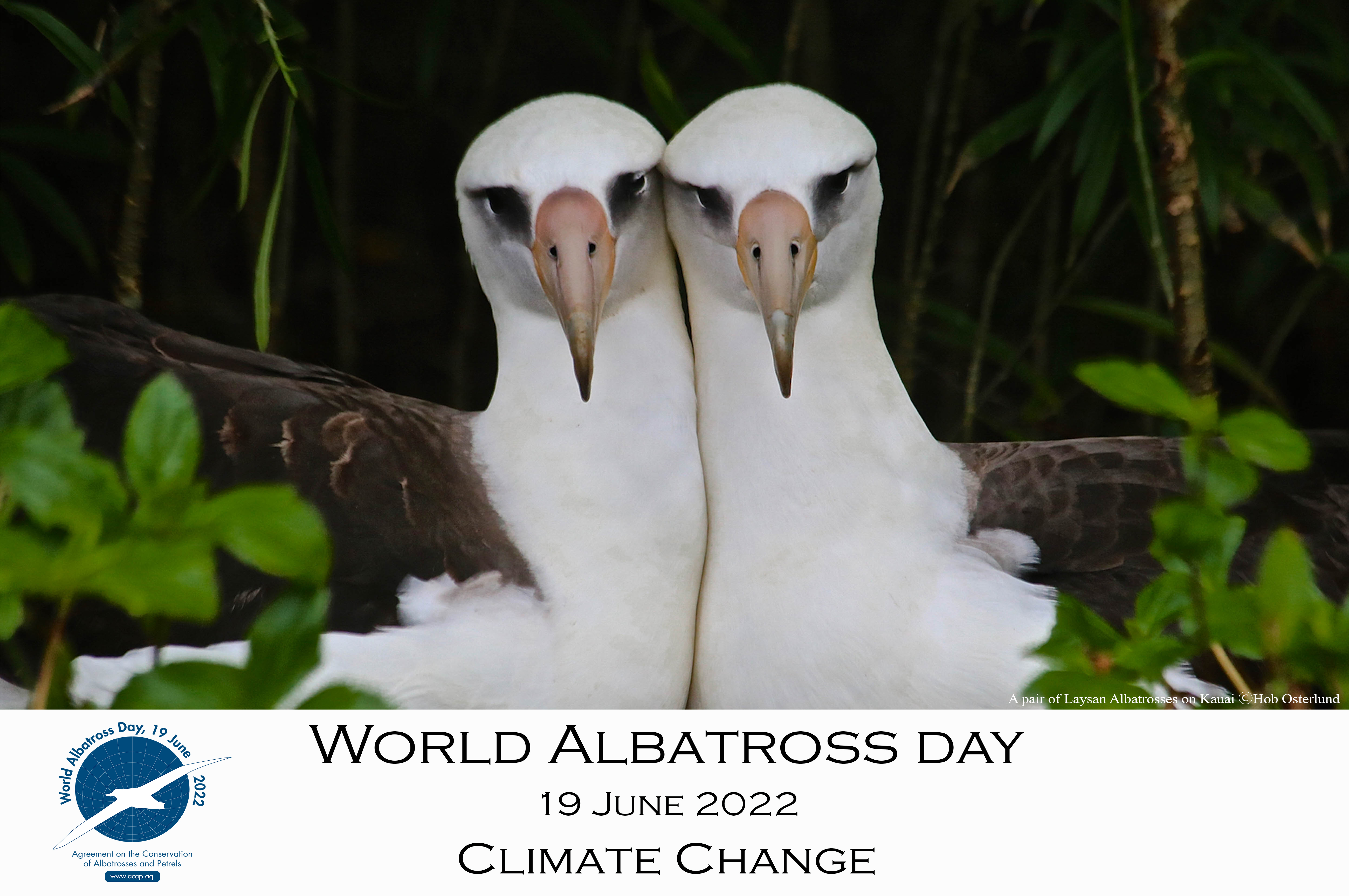
The Laysan Albatross (depicted here) along with the Black-footed Albatross were the two featured species for World Albatross Day 2022. Photograph by Hob Osterlund, poster design by Michelle Risi
2023 and the fourth World Albatross Day
This year marks the fourth World Albatross Day, and the last one I will lead on behalf the Albatross and Petrel Agreement. As before we produced updated logos, once more collaborated with ABUN (around 80 artworks, a collage and a music video), and made the usual posters. With Michelle Risi then being based on Aldabra in early 2023, ACAP’s new Communications Advisor Bree Forrer stepped into the breach to take change of the artwork and photo posters. Featured species for the year are the Black-browed Albatross Thalassarche melanophris and the Northern Royal Albatross D. sanfordi – along with the 2022 pair due to their exposure to plastic pollution. Sponsored infographics were again produced for the two new species, that for the Black-browed also in Portuguese, noting it is a regular visitor to Brazilian waters.
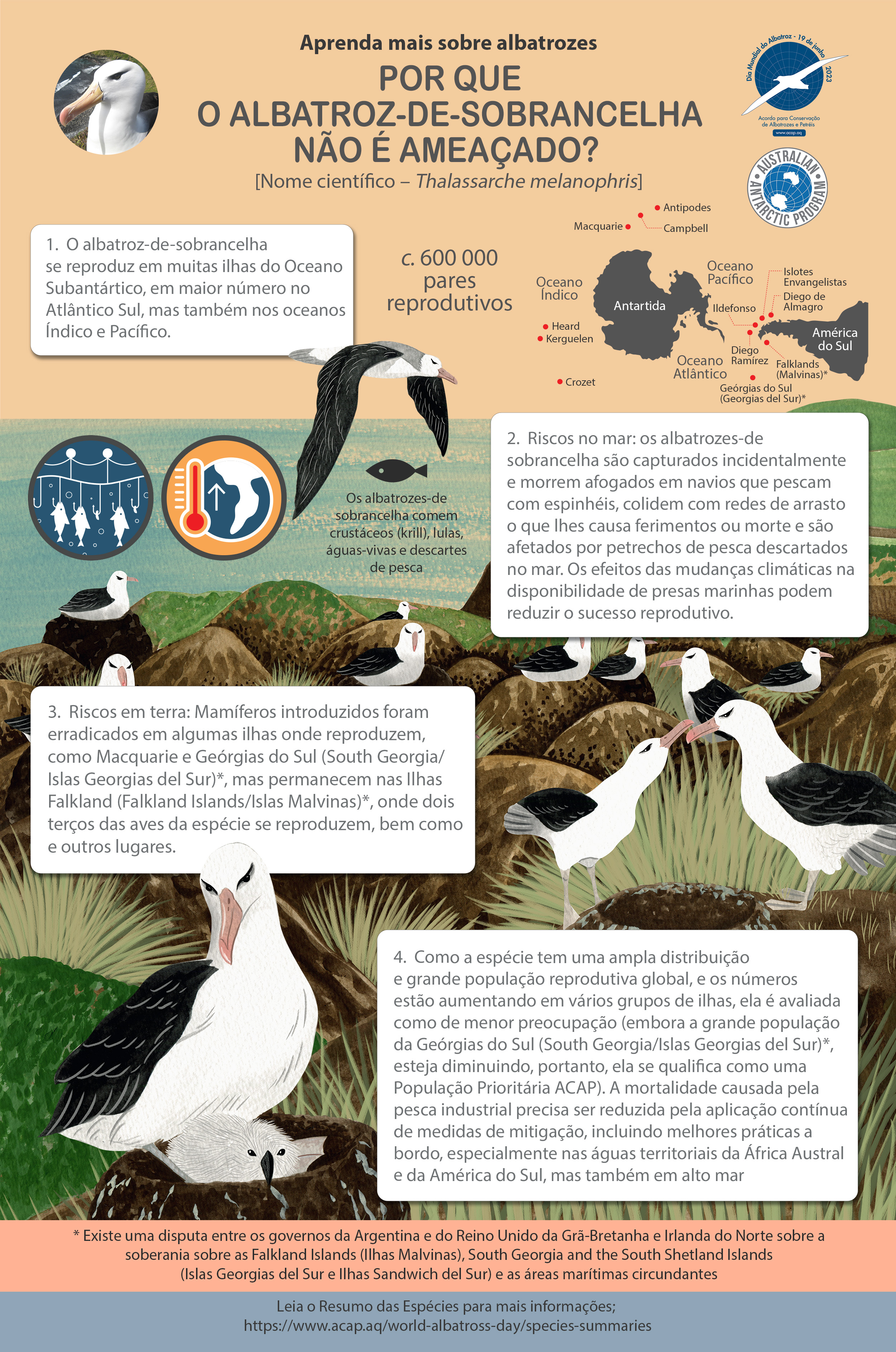
Reaching out to Brazil. The ACAP Species Infographic for the Black-browed Albatross also comes in Portuguese, poster design by Namo Niumim
The biggest innovation this year, perhaps, has been expanding the suite of languages for WAD logos and posters to include Portuguese and also, to mark the significance to albatross conservation of the activities of Asian high-seas fishery fleets, Indonesian, Japanese, Korean and in Simplified and Traditional Chinese.

This World Albatross Day 2023 poster, one of a set of 12, is in Korean. It depicts a Black-footed Albatross and its chick. Photograph by Wieteke Holthuijsen, poster design by Bree Forrer
Thoughts on a way forward
For 2024’s World Albatross Day I will have stepped back and Bree Forrer will be taking the lead. A change in leadership gives an opportunity to consider ACAP’s continued role and what should be its primary audience in raising awareness of the conservation plight of the world’s 22 species of albatrosses. Whereas I see working to inform the concerned public should remain an important feature of World Albatross Day, I also see the need to work more closely with national authorities, fishery companies and with selected Regional Fishery Management Organisations, most importantly the five tRFMOs that manage high seas-fishing for tuna. ACAP’s recently updated communications strategy can inform the way forward in this regard.
Thought could also be given to working towards World Albatross Day being officially recognized by the United Nations. This is a rather complicated business that requires the support of a UN member to make a nomination. Nevertheless, I see it as a worthwhile aim that should not be allowed to slip too far down in the job jar. A first step might be preparing an Information Paper with a proposal to discuss at an upcoming meeting of the Advisory Committee.
An afterthought
After a year or two of World Albatross Days, I remember receiving an email that informed me as then ACAP’s Information Officer that World Albatross Day on 19 June was fast approaching and did ACAP know of it and what was it going to do. Rather than being disappointed that all our efforts had been apparently missed, I took heart that if the correspondent did not know it was ACAP’s initiative, then Michelle’s and my original idea that World Albatross Day should become a truly global event with its own impetus was coming to pass quite early on. This suggests that even without the Agreement taking the lead every year, the day has reached a level that it might well continue for years to come. Let’s hope so!
Acknowledgements
So many have helped ACAP over four years of World Albatross Days it is not practical to thank them all. However, I would like to single out Michelle Risi, Marine Apex Predator Research Unit, Nelson Mandela University and Kitty Harvill, Co-founder, Artists and Biologists Unite for Nature, for my especial thanks. Always good working with you both!
References:
ACAP 2019. Report of the Eleventh Meeting of the Advisory Committee, Florianópolis, Brazil, 13 - 17 May 2019. 57 pp.
Risi, M. & Cooper, J, 2019. A proposal for a World Albatross Day. AC11 Inf 05. 2 pp.
Secretariat 2023. ACAP communications strategy update. AC13 Inf 03. 10 pp.
John Cooper, Emeritus Information Officer, Agreement on the Conservation of Albatrosses and Petrels, 18 June 2023
 A banner-raising ceremony to celebrate World Albatross Day was held during the morning tea at the Australian Antarctic Program’s Headquarters before all the tasty cakes were devoured. Mike Double, ACAP Advisory Committee Chair, is on the left holding the end of one of the banners
A banner-raising ceremony to celebrate World Albatross Day was held during the morning tea at the Australian Antarctic Program’s Headquarters before all the tasty cakes were devoured. Mike Double, ACAP Advisory Committee Chair, is on the left holding the end of one of the banners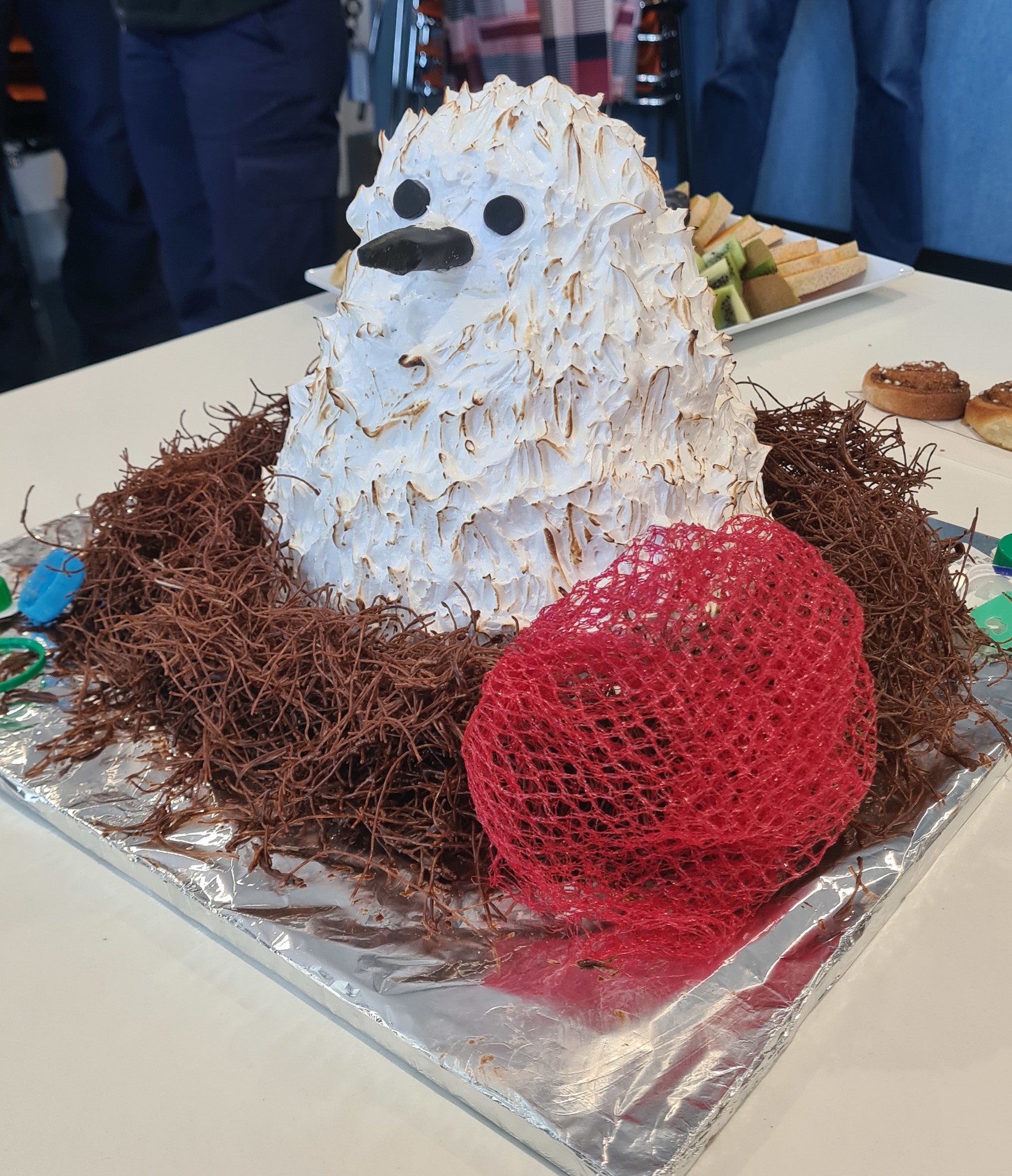
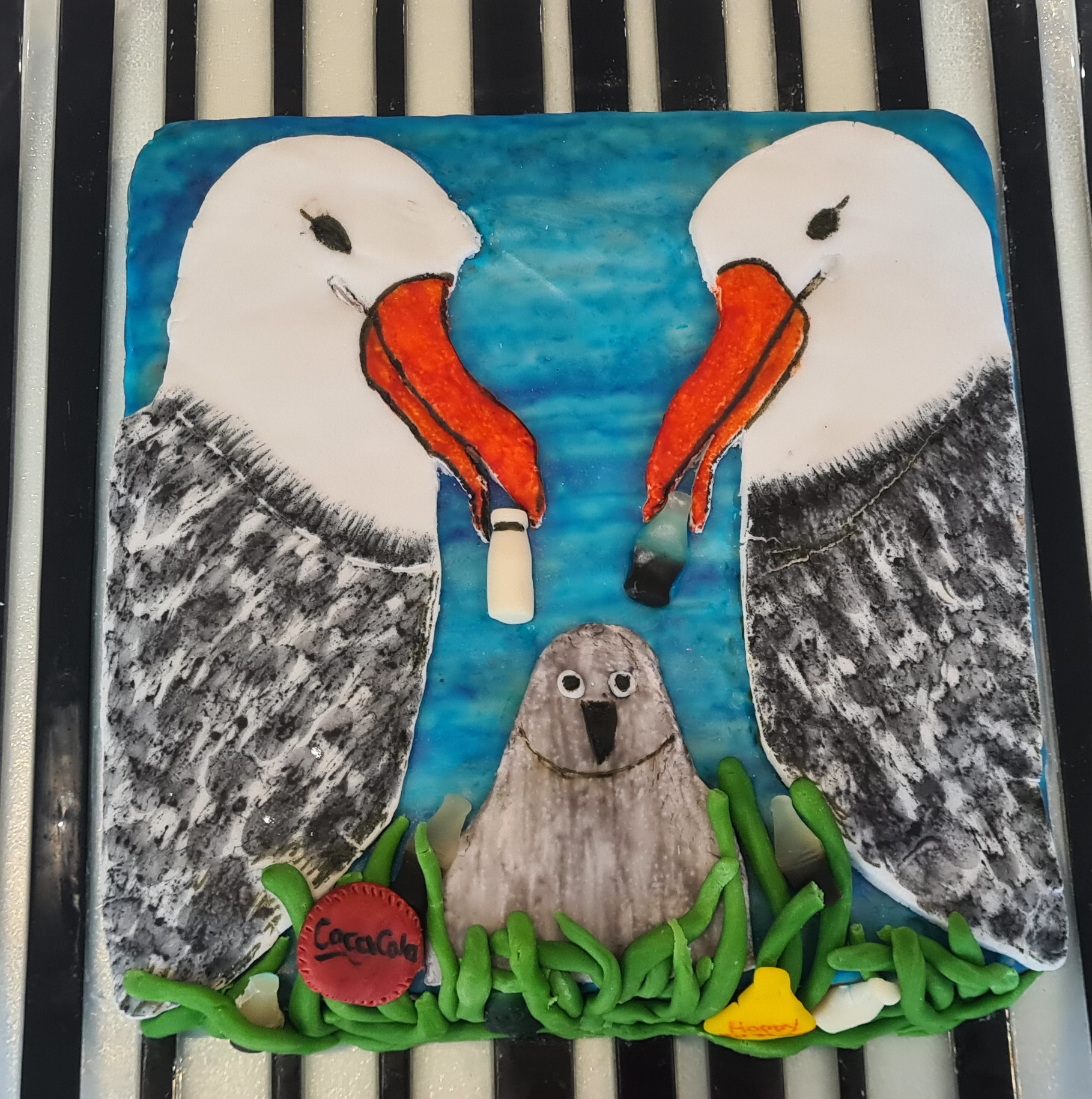


 English
English  Français
Français  Español
Español 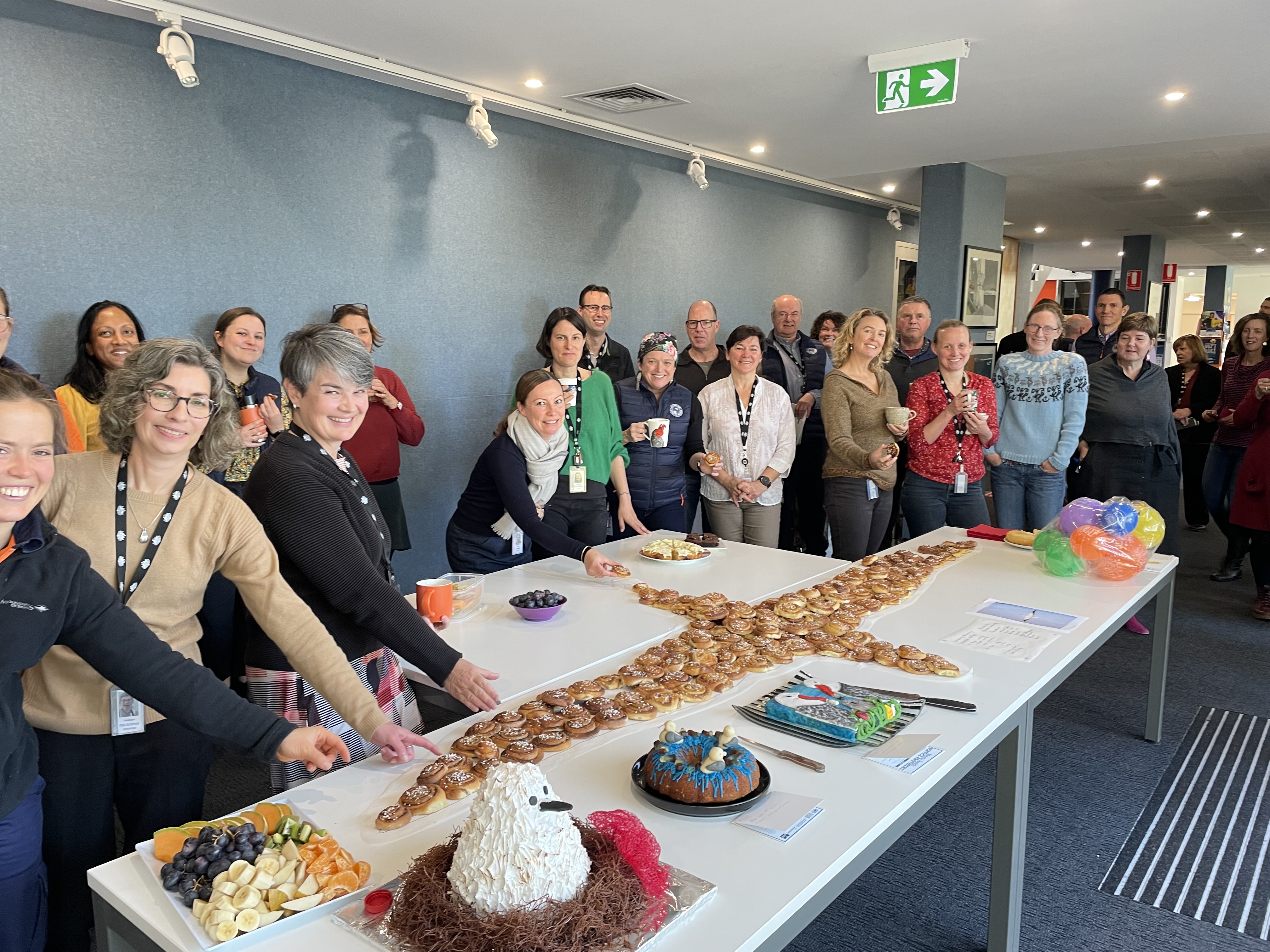
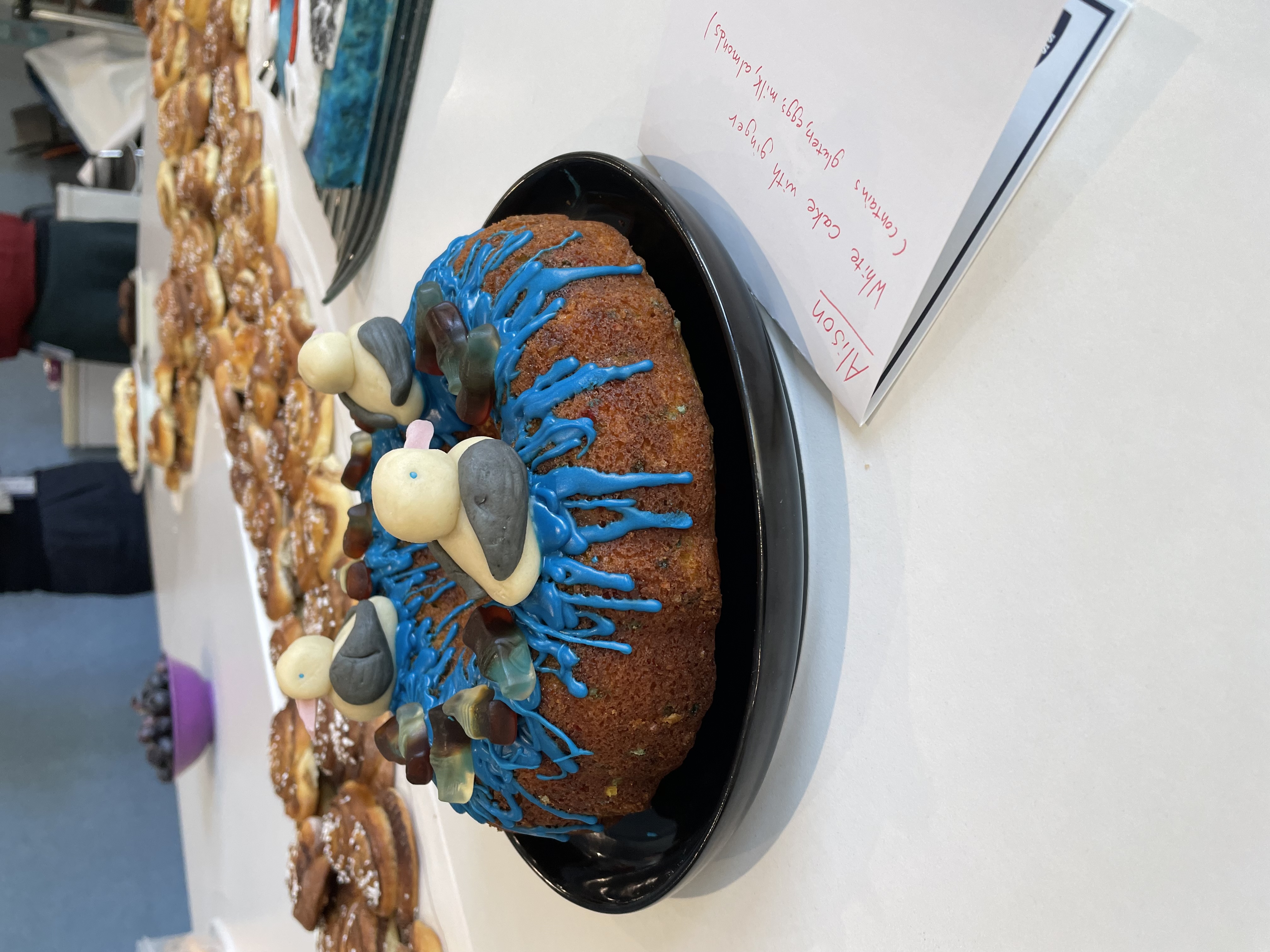

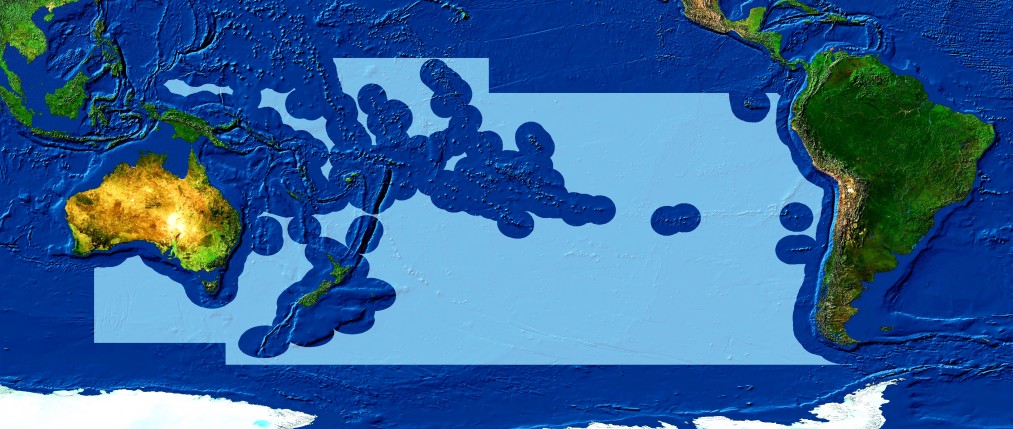 An illustrative depiction of the Area of application of the SPRFMO Convention; SPRFMO website
An illustrative depiction of the Area of application of the SPRFMO Convention; SPRFMO website
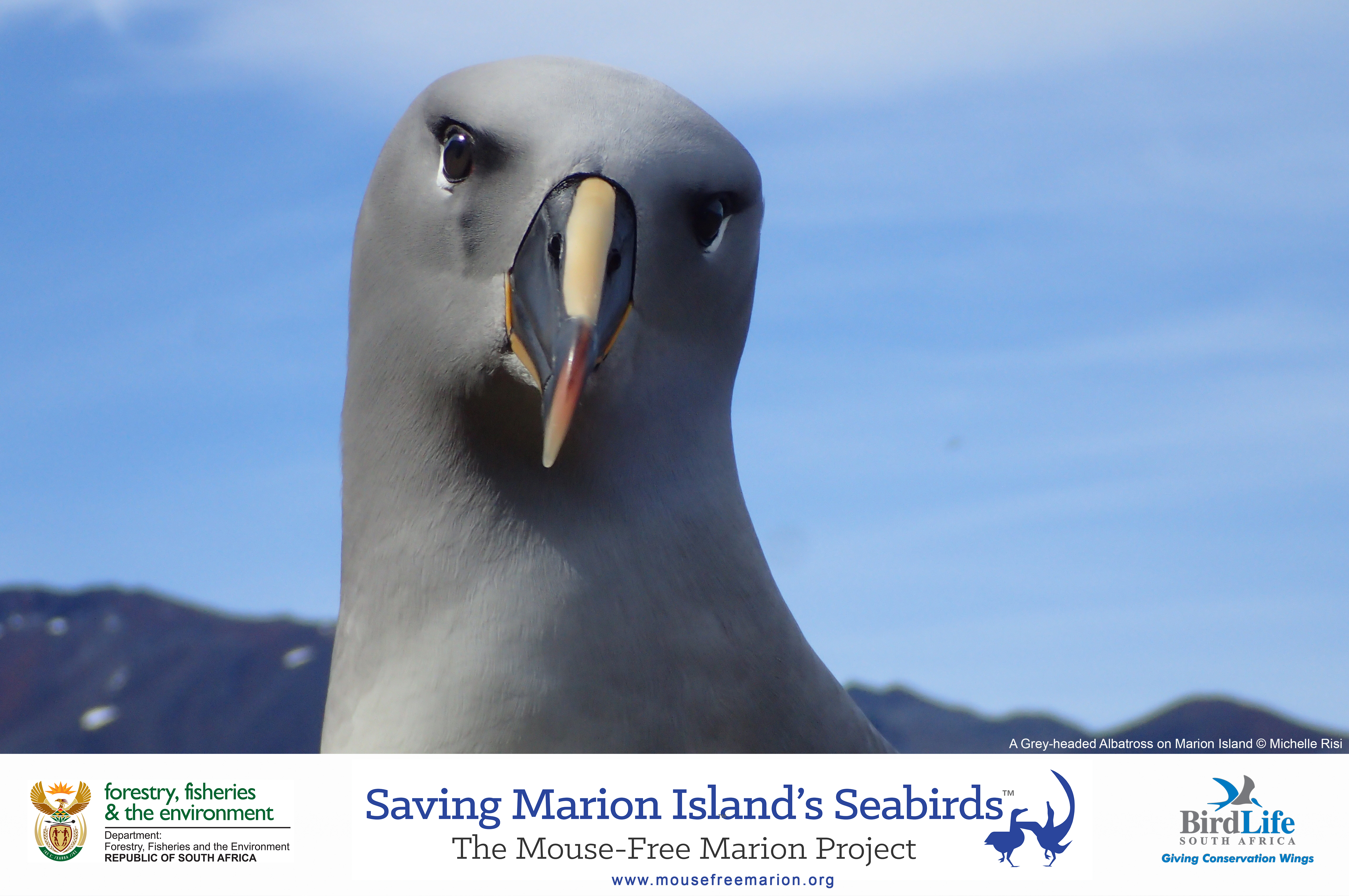 At risk to mice: a Grey-headed Albatross on Marion Island; photograph and poster design by Michelle Risi
At risk to mice: a Grey-headed Albatross on Marion Island; photograph and poster design by Michelle Risi To support ACAP’s awareness raising,
To support ACAP’s awareness raising, 